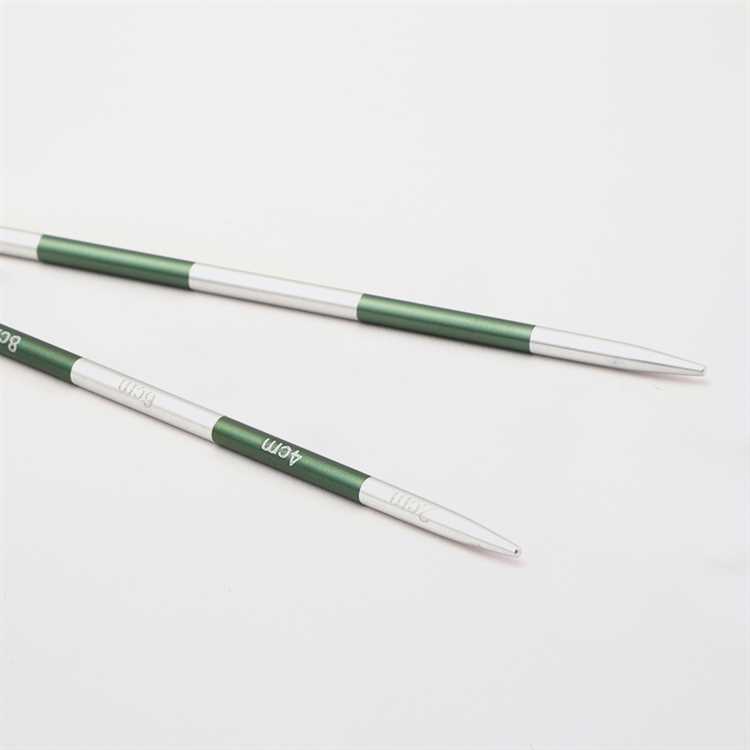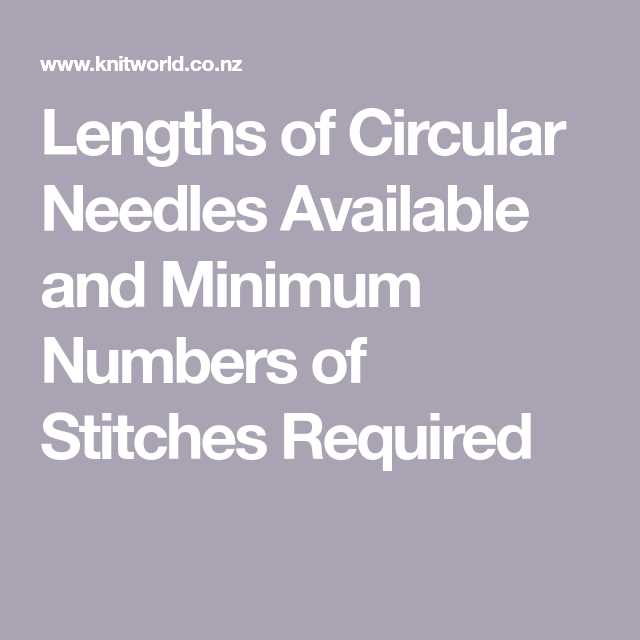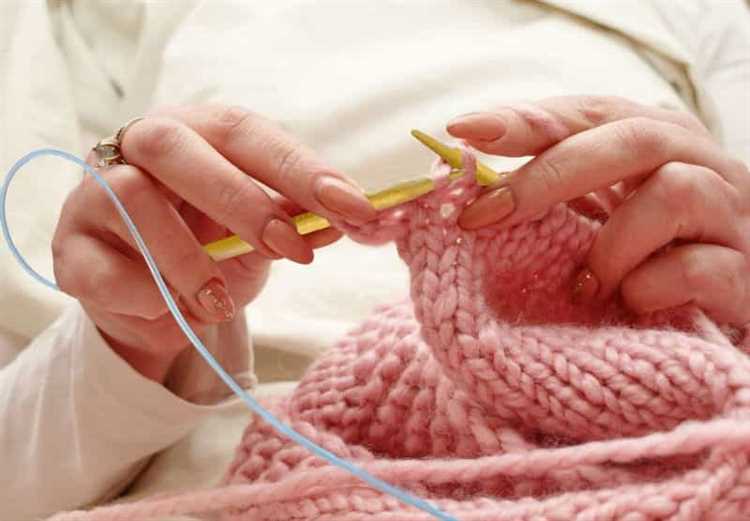Are you tired of using the wrong size circular knitting needles for your projects? Do you struggle with achieving the correct gauge and fit? Look no further than this ultimate guide on how to measure circular knitting needles. With these measurement tips, you will be able to choose the right size needles for any project, ensuring a perfect fit every time.
One of the most important factors in knitting is achieving the correct gauge. This is especially true when working with circular knitting needles. The size of the needles can greatly affect the tension of your stitches, leading to a sweater that is too tight or a hat that is too loose. By measuring the size of your circular knitting needles accurately, you can ensure that your stitches will be consistent and your final project will fit perfectly.
So how do you measure circular knitting needles? The first step is to gather your materials. You will need a measuring tape or ruler with millimeter measurements, as well as the circular knitting needle you want to measure. Lay the needle on a flat surface and start measuring from the tip to the join. Be sure to measure the needle itself, not including the cable length.
Once you have measured the length of the needle, you can determine the size. The most common sizing system for circular knitting needles is millimeters. The size of the needle will be marked on the cable or on the needle itself. If the needles are not labeled, you can use a needle gauge to determine the size. Simply slide the needle into the corresponding hole until it fits snugly, and read the size on the gauge.
Now that you know how to measure circular knitting needles, you can confidently choose the right size for your next project. Remember to always check your gauge before starting a new pattern, and adjust your needle size if necessary. Happy knitting!
Why Measuring Circular Knitting Needles Is Important
Circular knitting needles are a popular choice for many knitters as they allow for seamless knitting in the round. However, it is important to measure circular knitting needles accurately to ensure the best knitting experience and outcome.
Here are a few reasons why measuring circular knitting needles is important:
- Proper gauge: Measuring circular knitting needles helps determine the correct gauge for your knitting project. The gauge refers to the number of stitches and rows per inch or centimeter, and it plays a crucial role in achieving the desired size and fit of your finished knitted item.
- Pattern compatibility: Different knitting patterns may require specific needle sizes to achieve the desired tension and stitch definition. By measuring your circular knitting needles, you can ensure that they meet the requirements of the pattern you are working on.
- Comfort while knitting: Circular knitting needles come in various lengths, and choosing the right length for your project is essential for your comfort while knitting. Measuring the length of your circular knitting needles allows you to select the most suitable size, preventing hand strain and promoting a more enjoyable knitting experience.
Measuring circular knitting needles is a simple process that can be done using a ruler or a needle gauge. It involves measuring the length of the needles as well as determining the size or diameter of the needle tips. These measurements are usually provided in metric or US sizes, making it easy to find the right needle for your project.
By taking the time to measure your circular knitting needles before starting a project, you can ensure that you have the correct gauge, suitable needle size, and the most comfortable knitting experience possible. So, grab your measuring tools and get ready to create beautiful knitted items with confidence!
Choosing the Right Circular Knitting Needle Length
When it comes to circular knitting needles, one important factor to consider is the length of the needle. The right needle length depends on the project you are working on and your personal knitting style. Here are some tips to help you choose the right circular knitting needle length:
- Consider the project size: Different projects require different needle lengths. For smaller projects like hats or socks, a shorter needle length, such as 16 inches or 40 centimeters, may be more suitable. For larger projects like sweaters or blankets, a longer needle length, like 32 inches or 80 centimeters, may be preferable.
- Take your knitting style into account: Your personal knitting style can also influence the needle length you prefer. If you hold your knitting close to your body, a shorter needle length may be more comfortable. If you prefer to have more space to spread out your stitches, a longer needle length may be better.
- Consider the circumference of your project: The needle length should be shorter than the circumference of your project. This allows the stitches to move freely on the needle without getting stretched or bunched up. If the needle is too long, it can be difficult to manage the stitches.
- Try different lengths: If you are unsure about the right needle length, it can be helpful to try out different lengths before committing to one. You can borrow needles from a friend or purchase a few different lengths to test out. This allows you to see how each length feels in your hands and how it affects your knitting.
- Consider the cable length: In addition to the needle length, it is also important to consider the cable length. The cable should be long enough to comfortably hold all your stitches. If the cable is too short, it can cause the stitches to bunch up and make knitting difficult.
By considering the project size, your knitting style, the circumference of the project, and trying out different lengths, you can find the right circular knitting needle length that works best for you. Happy knitting!
Understanding Circular Knitting Needle Sizes
When it comes to circular knitting needles, understanding the sizes can be a bit confusing. Unlike straight knitting needles, circular needles are measured in two different ways: the length of the cord and the diameter of the needle itself.
The length of the cord refers to the total length of the circular needle, including both the two needle tips and the connecting cord in between. This measurement is important because it determines the circumference of the knitting project you can work on. The most common lengths for circular knitting needles range from 16 inches to 60 inches, with some specialty needles available in longer or shorter lengths.
The diameter of the needle refers to the size of the needle itself, which determines the size of the stitches. Circular knitting needle sizes are typically measured in millimeters (mm) or US needle sizes. The smaller the needle diameter, the smaller the stitches will be. Common sizes include 3.25mm, 3.75mm, 4mm, 4.5mm, and so on. It’s important to note that there can be slight variations in needle sizes between different manufacturers, so it’s always a good idea to check the needle gauge recommended in your knitting pattern.
When choosing the right circular knitting needle size for your project, it’s important to consider the type of yarn you’ll be using and the desired tension or gauge of your project. Thicker yarns will typically require larger needle sizes to create a looser, more open fabric, while finer yarns will require smaller needle sizes for a tighter, more compact fabric.
It’s also worth noting that circular knitting needles with smaller diameters are often used for intricate or detailed work, while larger needles are better suited for bigger, bulkier projects.
Overall, understanding circular knitting needle sizes is important for selecting the right needle for your project. By considering the length of the cord and the diameter of the needle, you can ensure that your knitting experience is enjoyable and your finished project turns out just as you envisioned.
How to Measure Circular Knitting Needle Diameter
Measuring the diameter of circular knitting needles is important for knitters to ensure they are using the correct size for their projects. Here are some steps to help you measure the diameter of your circular knitting needles:
- Gather your materials:
- Ruler or tape measure
- Circular knitting needle
- Place the circular knitting needle on a flat surface:
- Measure the diameter:
- Repeat for accuracy:
- Check the needle size:
- Label the needle:
Make sure the needle is positioned so that the cable lies straight and flat against the surface.
Using the ruler or tape measure, place the 0 mark at one end of the needle’s circumference. Then, measure across the needle to the opposite side. Take note of the measurement in millimeters.
To ensure accuracy, measure the needle at different points along its circumference.
Refer to the needle size chart, which typically lists the millimeter size next to the needle size (e.g., US size 6 = 4 mm). Compare your measurement with the chart to determine the needle size.
Once you have determined the needle size, label the needle with the corresponding size for easy identification in the future.
Measuring the diameter of circular knitting needles can be a simple yet essential step in knitting projects. With this measurement, you can ensure that you are using the correct needle size for achieving the desired gauge and stitch pattern.
Measuring Circular Knitting Needle Material
When it comes to measuring circular knitting needles, it’s important to consider not only the size, but also the material they are made of. The material can greatly affect the overall feel and performance of the needle.
Common materials for circular knitting needles include:
- Bamboo: Bamboo circular knitting needles are lightweight and have a warm feel to them. They are flexible and have a slight grip, which can help prevent stitches from sliding off. Bamboo needles are great for beginners or those who prefer a more natural feel.
- Metal: Metal needles, such as stainless steel or aluminum, are known for their smooth and slick surface. They are highly durable and can withstand heavy use without bending or breaking. Metal needles are great for working with slippery yarns or when speed is a priority.
- Wood: Wood circular knitting needles offer a balance between bamboo and metal. They have a smooth surface like metal needles, but with slightly more grip like bamboo. Wood needles are often made from hardwoods like birch or maple, which add a touch of warmth and elegance to your knitting experience.
- Plastic: Plastic circular knitting needles are lightweight and budget-friendly. They are often made from acrylic or nylon and can be a good option for beginners or those on a tight budget. However, they may not be as durable or smooth as other materials.
When measuring circular knitting needle material, it’s important to consider your personal preferences and the type of project you are working on. Each material has its own benefits and drawbacks, so it’s worth experimenting to find the one that you enjoy working with the most.
| Material | Benefits | Drawbacks |
|---|---|---|
| Bamboo | Lightweight, warm feel, slight grip | May break or splinter with heavy use |
| Metal | Smooth, slick surface, highly durable | Colder feel, stitches may slide off easily |
| Wood | Smooth surface with grip, warm feel, elegant | Not as widely available, may break or splinter with heavy use |
| Plastic | Lightweight, budget-friendly | May not be as durable or smooth |
Remember, the material of your circular knitting needles can greatly impact your knitting experience. So, take the time to explore different materials and find the one that suits your style and the project at hand. Happy knitting!
Troubleshooting Measurement Issues
If you are experiencing issues with measuring your circular knitting needles, there are a few troubleshooting steps you can take to ensure accurate measurements.
- Use a ruler or measuring tape: Make sure you are using a reliable and accurate measuring tool to measure your circular knitting needles. A ruler or measuring tape with clear markings and a consistent scale will provide more accurate measurements.
- Check for proper alignment: Ensure that the measuring tool is properly aligned with the starting and ending points of the circular knitting needle. If the tool is not aligned correctly, it can lead to inaccurate measurements.
- Avoid stretching the needle: When measuring the length of a circular knitting needle, avoid stretching it out. Hold the needle in a relaxed position and measure accordingly. Stretching the needle can lead to inaccurate measurements.
- Take multiple measurements: To ensure accuracy, take multiple measurements of the circular knitting needle. Measure from different starting and ending points to verify consistency in the measurements.
- Round to the nearest decimal: If you are using a ruler with small markings, there may be slight variations in the measurements. In such cases, round your measurements to the nearest decimal point for simplicity.
If you have followed these troubleshooting steps and are still experiencing measurement issues, it may be helpful to consult a more experienced knitter or seek assistance from a knitting community or forum.
Tips for Accurate Circular Knitting Needle Measurements
Measuring your circular knitting needles accurately is essential to ensure proper fit and gauge in your knitting projects. Here are some tips to help you measure your circular knitting needles accurately:
- Use a measuring tape: A measuring tape is one of the best tools for accurately measuring the length of your circular knitting needles. It allows you to get precise measurements, especially for longer needles.
- Measure from tip to tip: When measuring circular knitting needles, always start from the tip of one needle to the tip of the opposite needle. This will give you the total length of the needle, including the cable.
- Include the cable length: Make sure to include the length of the cable in your measurement. The cable length can vary depending on the brand and type of needle, so it’s important to include it in your measurements to accurately determine the needle size.
- Check for metric and US sizes: Circular knitting needles are often labeled with both metric and US sizes. Make sure to check both measurements to ensure you are using the correct size for your project.
- Take note of the needle material: The material of the needle can affect its flexibility and grip, which in turn can affect your knitting gauge. Some materials may stretch more than others, so it’s important to consider the material when measuring your circular knitting needles.
- Refer to the manufacturer’s guide: If you are unsure about the measurement or size of your circular knitting needles, refer to the manufacturer’s guide. They often provide detailed information on how to measure their needles accurately.
By following these tips, you can ensure that your circular knitting needle measurements are accurate and that your knitting projects turn out as desired.
FAQ:
How do I measure circular knitting needles?
To measure circular knitting needles, you will need a ruler or tape measure. Start by laying the needle on a flat surface and measure from the tip to the other tip in a straight line. This will give you the total length of the needle. If you also want to measure the cable length, measure from the tip of the needle to where the cable starts.
What is the purpose of measuring circular knitting needles?
Measuring circular knitting needles is important for several reasons. First, it helps you determine the actual length of the needle, which can be useful when you are selecting a new pair or trying to compare different brands. Second, it allows you to calculate the length of the cable, which is important for certain knitting projects. Finally, it ensures that you are using the correct length of needle for your project, which can affect the tension and overall outcome of the knit.
Can I measure circular knitting needles with a regular ruler?
Yes, you can measure circular knitting needles with a regular ruler or tape measure. However, it is important to ensure that the ruler is long enough to measure the entire length of the needle. If the needle is longer than your ruler, you can measure one side and then measure the other side separately. Just make sure to add the two measurements together to get the total length of the needle.
Are there any specific tips or tricks for measuring circular knitting needles?
Yes, there are a few tips and tricks for measuring circular knitting needles. First, make sure to measure in a straight line from tip to tip, rather than following the curve of the needle. This will give you a more accurate measurement. Second, if you are measuring a needle with a flexible cable, make sure to account for any stretch or give in the cable when measuring. Finally, if you are measuring multiple needles, it can be helpful to mark the measurements on the needles with a piece of tape or a removable marker for easy reference in the future.


